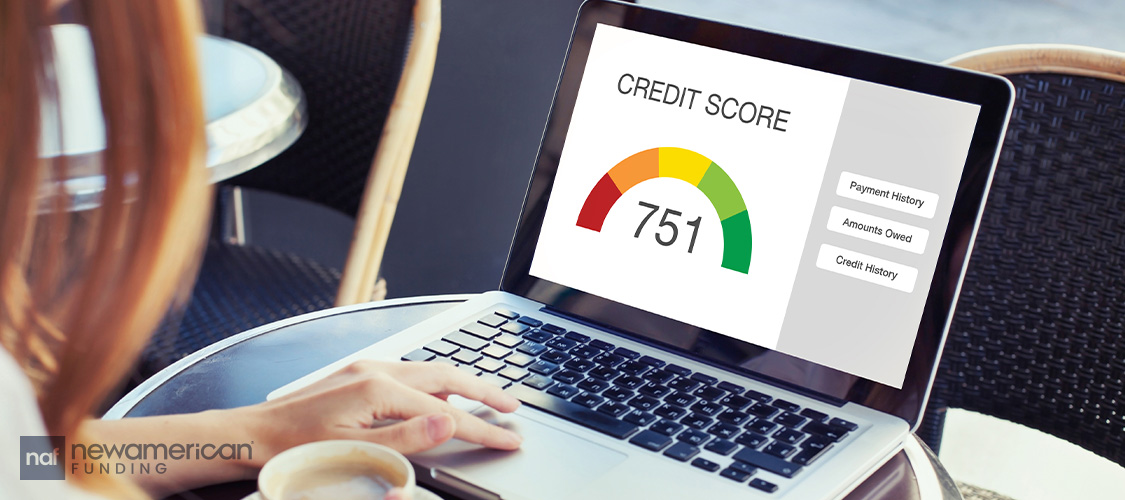Homeowners
Refinancing Your Mortgage: A Homeowner’s Step-by-Step Guide to Refinancing Your Loan
January 7, 2025
Whether you’re looking to lower your monthly housing payments, shorten the duration of your loan, or tap into your home’s equity, refinancing your mortgage may help you to achieve your financial goals.
This is when you replace your current mortgage with a new loan, ideally with more advantageous terms.
“It’s about the homeowner’s needs,” said Hamest Manoukian, a New American Funding loan consultant based in Whittier, Calif.
"Refinancing isn't just for paying off debt—you can use cash-out funds to build an accessory dwelling unit (ADU), buy an investment property, or even purchase a second home to generate income," said Manoukian.
This step-by-step guide will walk you through the refinancing process, including what to consider along the way, the costs associated with refinancing your loan, and frequently asked questions to help you make informed decisions.
What is mortgage refinancing?

Think of a refinance as trading in your old loan for a new one that better suits your needs.
This might mean getting a lower interest rate, changing the length of your loan term, of switching from an adjustable-rate mortgage (ARM) to a fixed-rate mortgage so the mortgage payments don’t change over time. You may also be able to use it to access cash from your home's equity to fund renovations.
Many homeowners also refinance their loans to pay off or consolidate their debt.
There are several types of refinancing, each tailored to specific needs:
- Rate-and-Term Refinance: This is the most common type of refinancing. It allows homeowners to change their loan's interest rate, term length, or both. For example, you may be able to lower your monthly payments by extending the length of the loan or save on interest by shortening the loan so that it’s paid off quicker.
- Cash-Out Refinance: With this option, you borrow more than your current mortgage balance and take the difference out as cash. This loan is popular with those who need money for a business, home improvement, or emergency, or want to consolidate their debt.
- Streamline Refinance: This is a simplified process available for Federal Housing Administration (FHA), U.S. Department of Veterans Affairs (VA), and U.S. Department of Agriculture (USDA) loans. The loans often don’t require a new appraisal or full credit check, making it quicker and easier process for qualified borrowers than other types of refinances.
- Home Equity Line of Credit (HELOC): A HELOC allows homeowners to borrow against the equity in their home, like a credit card. Unlike traditional refinancing, a HELOC gives you access to funds as you need them. This can be helpful for ongoing expenses like home improvements or medical bills without having to restructure your entire mortgage.
- Home Equity Loan: A home equity loan, sometimes referred to as a second mortgage, allows you to borrow a lump sum of money against your home's equity. Unlike a HELOC, a home equity loan has a fixed interest rate and repayment schedule.
Evaluate your financial situation before refinancing your mortgage

Before refinancing, it’s important to look at your current financial situation, figure out the costs associated with refinancing your loan, and ensure it makes sense for you.
While refinancing can save money in the long term, there are upfront costs to consider. Closing costs typically range from 2% to 5% of the loan amount. These costs include lender fees, appraisal fees, title insurance, and escrow fees.
In addition, your credit score impacts the mortgage rate you qualify for if you refinance your loan.
One way to evaluate whether refinancing is right for you is to calculate your break-even point. This is the time it will take for your savings from the new loan to offset the costs of refinancing.
For example, if your closing costs are $5,000 and you save $300 per month on your new loan, you'll break even in about 17 months.
Homeowners often focus too much on securing the lowest possible interest rate without considering the bigger picture, said New American Funding loan officer David Kooner. He is based in Scottsdale, Ariz.
"Obtaining the lowest possible [mortgage] interest rate is important. [However,] choosing a slightly higher rate can often mean significantly lower closing costs, which might be more beneficial in the short term,” said Kooner.
“This is particularly relevant for borrowers pulling out equity from their homes,” said Kooner. "The lower closing costs usually mean more cash in hand, which is typically more important.”
Some homeowners may be reluctant to give up their existing low mortgage rate to take on a higher one in a refinance. However, it’s important to do the math first, especially if they have higher interest rates on other debt.
"People often hyper-focus on their current low rate and don't realize that consolidating high-interest credit cards with a refinance [may] save them thousands, even if the new rate is higher," said Manoukian.
Prepare your mortgage refinance application

Gathering the necessary documentation for a refinance helps to streamline the process.
You will want to have recent pay stubs, W-2s, tax returns for the past two years, proof of homeowners insurance, your current mortgage statement, and asset and debt statements ready to provide to your loan officer.
Lenders look at your financial history closely, so ensure your paperwork is accurate and complete.
"Having a trusted lender with good connections to title, escrow, and appraisal services can significantly lower fees and smooth the process," said Manoukian.
Apply for a refinance and lock in your mortgage rate

Once you submit your application, you may be able to secure a mortgage rate. Many lenders offer the option to lock in your rate for 30 to 60 days, protecting you from rate increases while your loan is processed.
"Locking in a rate gives borrowers peace of mind in a fluctuating market," said Manoukian.
It's also a good idea to ask your lender about extension options in case the loan process takes longer than expected.
Rate locks can often be extended for an additional fee, ensuring your quoted rate remains secure until closing. Discussing this upfront can save stress and uncertainty later on.
You also want to ask your loan officer about a mortgage rate float down option and the cost for using it. If mortgage rates fall after you lock in a rate, this generally allows you to secure the lower rate, often for a fee.
Complete the refinance underwriting process
The underwriting process is when the lender verifies your financial details and property value. Be prepared for requests for additional documents or explanations, especially if you have had any recent changes in income or credit activity.
"A mistake to avoid is co-signing loans unless absolutely necessary, as it can affect your credit and your ability to refinance," said Manoukian.
Maintain open communication with your lender during the underwriting process. If your financial situation changes, such as a new source of income or a large purchase, notify your lender immediately.
This ensures the underwriting process stays on track and avoids last-minute surprises.
Close on your refinance

Once you close, your refinance is complete.
This is when you will pay any remaining closing costs, review and sign your loan documents, and receive your new loan repayment schedule.
With everything finalized, you can now enjoy the benefits of your refinanced loan, whether that's a lower monthly payment, extra cash from a cash-out refinance, or a shorter loan term.
Hamest Manoukian NMLS # 485360
David Kooner NMLS # 998641






 Smart Moves Start Here.
Smart Moves Start Here.